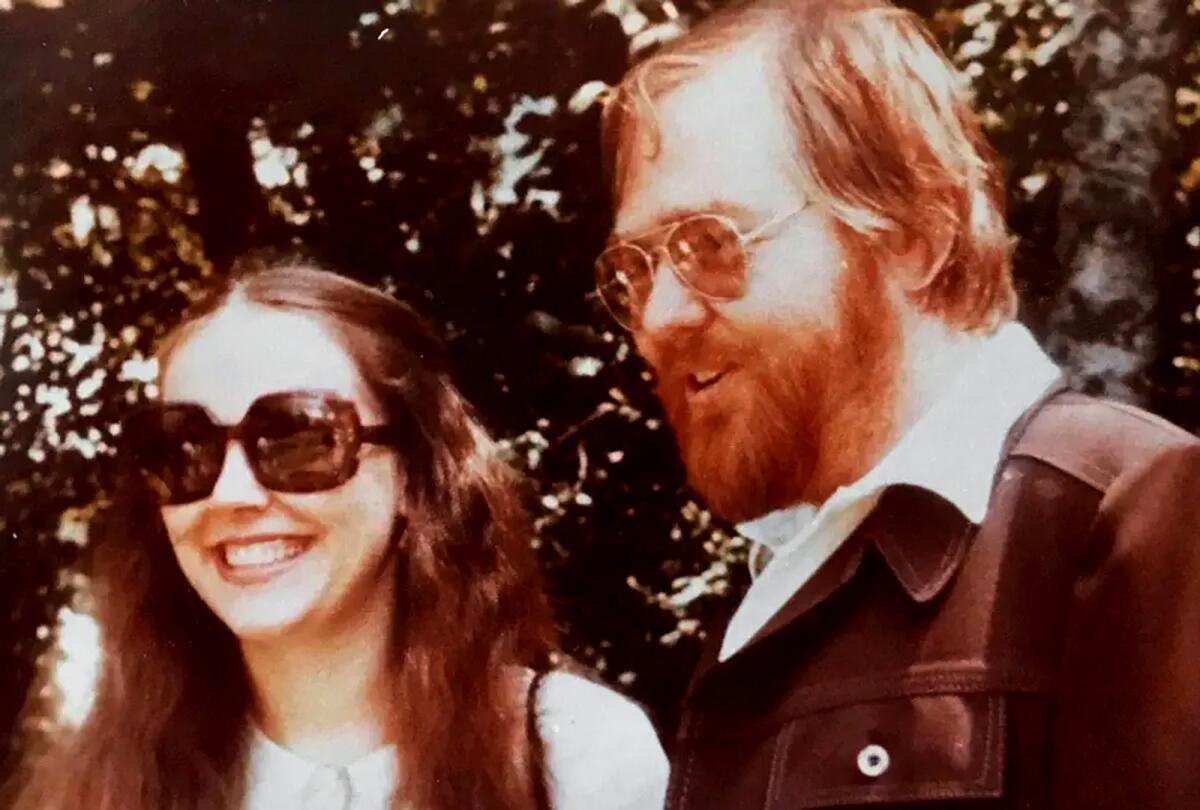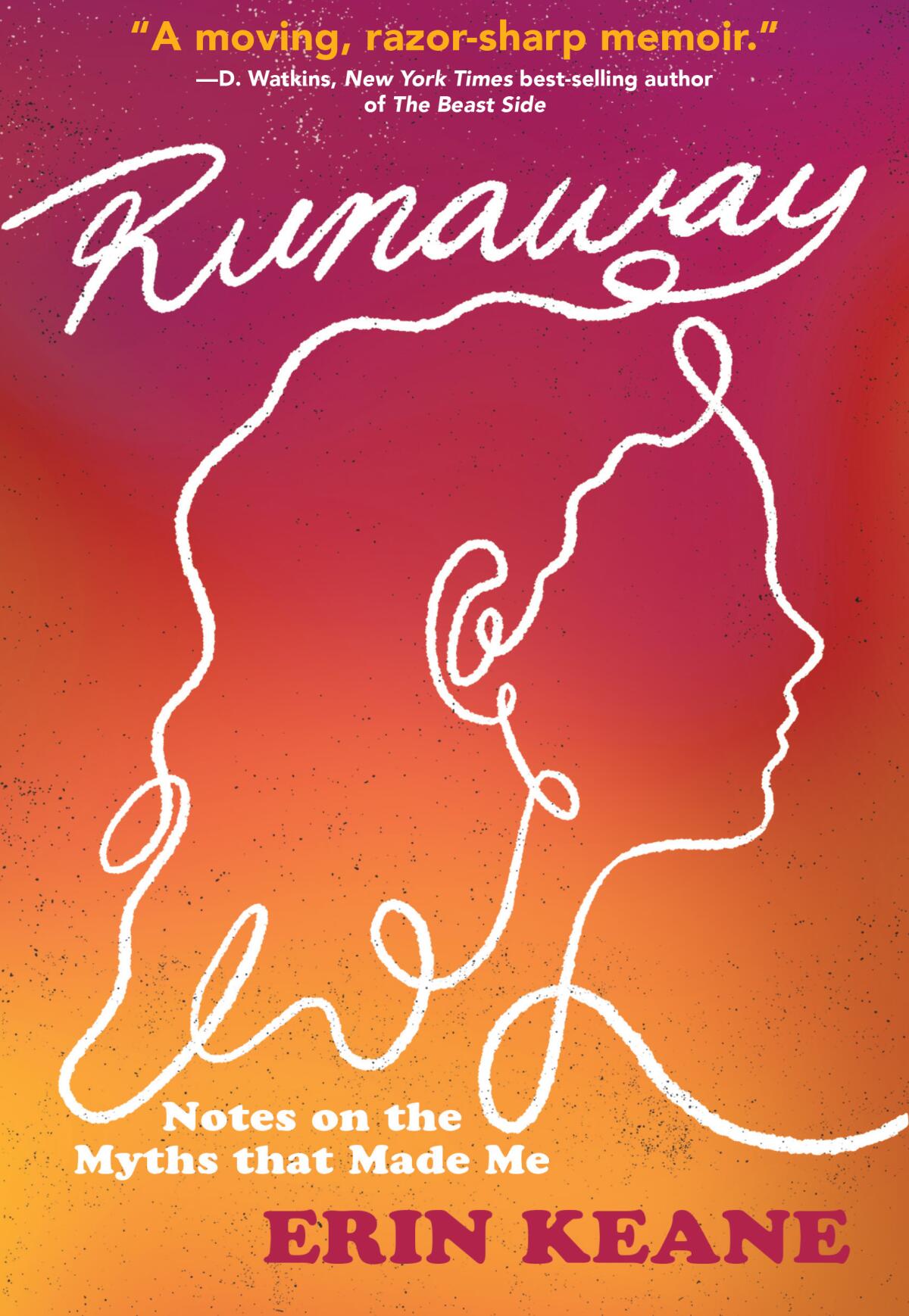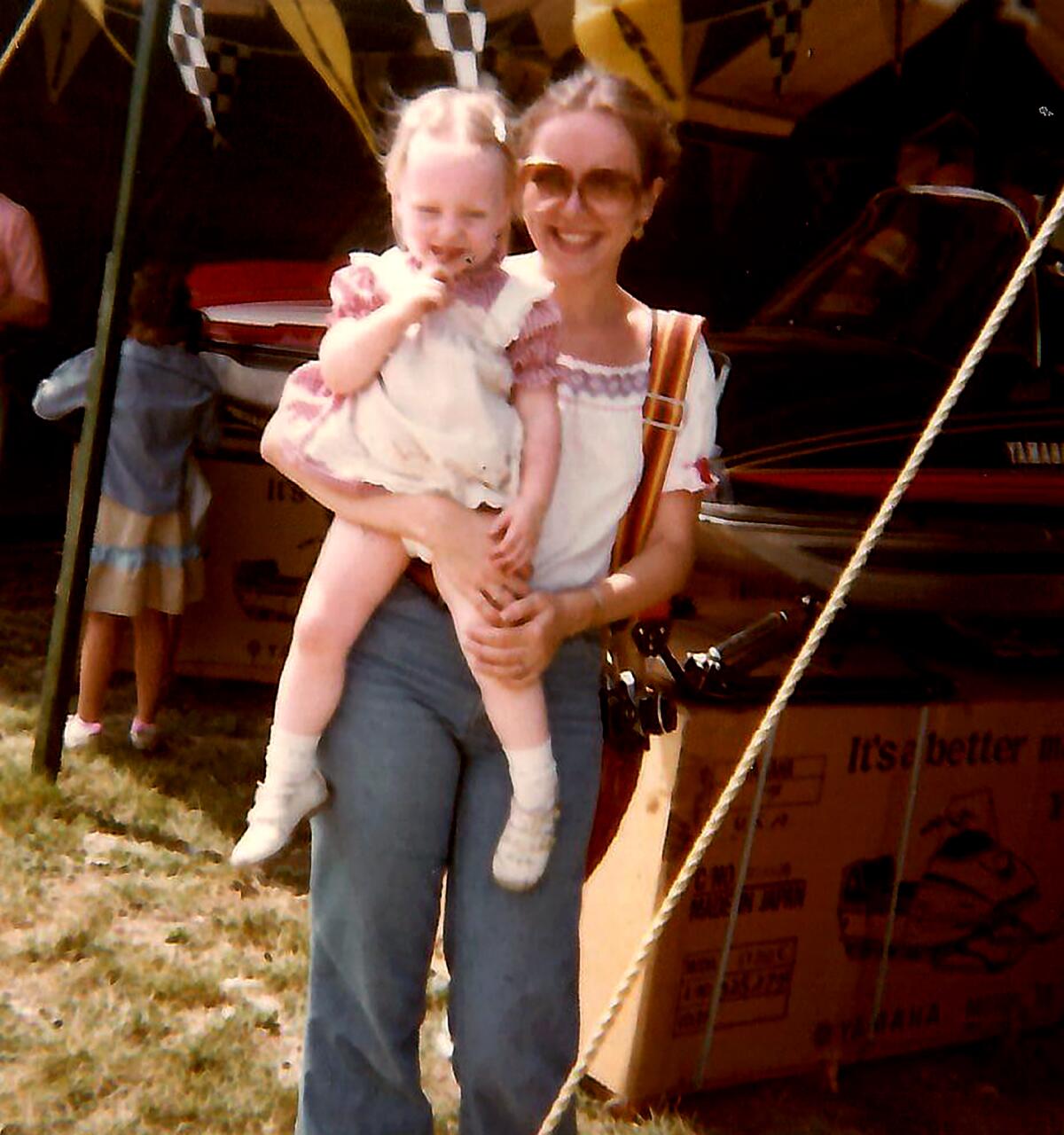Review: A runaway’s daughter dismantles the fairy tale of the rescuer and his muse

- Share via
On the Shelf
Runaway: Notes on the Myths That Made Me
By Erin Keane
Belt: 250 pages, $28
If you buy books linked on our site, The Times may earn a commission from Bookshop.org, whose fees support independent bookstores.
Erin Keane’s mother ran away to New York City at age 13, married at 15 and had two children by the time she was 19. To modern ears, steeped in stories of male predation and adolescent vulnerability, this sounds like a nightmare. But in her new memoir, “Runaway,” Keane remembers thinking of it as a fairy tale. Which in a sense it was: the romantic myth of the rescuer and the muse, one very much in need of dismantling. Which is where Keane, the adult, comes in.
Keane knew that her parents met at her mother’s favorite bar. It is “where I thought my family’s story started, when [Keane’s father, Red] was 36 and nobody knew — or more likely, nobody cared — that my mother was a child, claiming to be in her twenties with a name and backstory that had nothing to do with” who she actually was.

For Keane, a poet, cultural critic and Salon’s current editor in chief, it was the stuff of movies — a “grittier version” of “Manhattan,” Woody Allen’s film in which a twice-divorced older man falls in love with a 17-year-old, Tracy, played by Mariel Hemingway. It was one of Keane’s favorite films, a way of understanding her father, both a Renaissance man and a cabdriver, and his attraction to her mother: “My father, the complicated seeker; my mother, his beautiful life raft.”
In 2015, when Keane read Hemingway’s account of Allen’s attempts to date her, a wave of understanding washed over her: “Manhattan” was some kind of inside joke she hadn’t understood, reflective of “a culture that romanticizes men who have big appetites that shape their allure and cause their downfall, all while casting aside the unruly girls left in their wake as damaged goods.” It’s a culture in which her mother becomes “permanent … when a man appears next to her in the frame.”
Woody Allen’s maturity problem
Keane’s memoir is both a way to reckon with her place in her family and an effort to frame it through cultural analysis. Whether discussing kidnap narratives from the Western frontier or Princess Leia’s fractured relationship with Darth Vader, she draws from our collective culture to color in a story she knew as a rough sketch — and to question the hero narratives in all our lives.
Red died when Keane was 5, but her mother filled in the blanks, telling her that he had heroically served in the military and had been an intellectual dreamer with a day job. As an adult preparing to write an essay for Father’s Day, Keane began asking her mother for details. The answers opened the floodgates to her past and prompted only more — and deeper — questions.

How was it possible for a 13-year-old girl to disappear from her Kansas home and resurface in the East Village thousands of miles away? Keane’s search for answers immerses readers in early 1970s America, a place where the teenage runaway was either prosecuted or ignored — disappeared. Running away was a criminal offense that could land you in the juvenile justice system. The rebellious teen who fled had rejected the family home, the seat of patriarchy.
In Greek mythology, Demeter’s grief over her kidnapped daughter plunges the world into cold darkness for the half a year between Persephone’s returns. But where were Keane’s grandparents in the story of their lost daughter? Why did they never make an effort to find her? Investigating her mysterious grandparents as well, Keane finds complexity in their lives as a military couple, moved at sporadic intervals from pillar to post. But she is equally interested in the social forces that condoned their seeming indifference.
There was, for instance, the difference between a missing girl and a runaway: The missing girl, especially if she were white and pretty, was forever the tragic victim. The runaway, in contrast, had launched herself “voluntarily” out into the world (never mind the often abusive situations that drove her out of her home). The recovered missing girl is a miracle. A returned runaway, on the other hand, “remains a fugitive even after she’s home. The other kids were forbidden to talk to her, as if her status might have been contagious,” Keane writes. The first time her mom ran away, she returned home. But the second time, she became Red’s wife, and her parents did nothing.
Denise Martin mused that the last “Gilmore Girls” episode drew the series to a comfortable close [“ ‘Gilmore Girls’ Is Sealed With a Kiss,” May 17].
To be the daughter of a teenage mother is to grow up with a story about fateful decisions, forms of sacrifice. In my case, both my parents were painfully young, raising each other as they learned to raise their children. When these family stories are developed into TV or film, Keane writes, they become myths of a teen mother as “a sort of half-formed thing, suspended mid-metamorphosis between maiden and matron, caught between her age and her responsibility.” Shows like “Gilmore Girls” depict Lorelai and her daughter, Rory, as a dynamic in which Rory becomes the sensible one who tempers her mother’s arrested adolescent rebellion.

The stories told about adolescent girls are complicated by the realities of who gets to tell them. Movies have brought us tales of joyful teens whose relationships with older, more cynical men work on those men like manic pixie dust. But rather than casting individual blame, Keane implicates all of us in these tales. And she holds herself accountable for the ways her own work upholds those ways of seeing the world. “I keep circling back to the stories,” she writes, “that should have been told about girls and women but were instead given over to men, and my own complicity in perpetuating these narrative imbalances and injustices.” Why do we continue to consume these mythologized views of teenage girls?
Dismantling those stories is painful, Keene argues, because it forces people to feel sympathy for the less powerful. “Running into a wall of doubt about how the world should work and who is valued in it hurts. … After all, once you start tearing your own house down, you might not want to stop,” she writes.
Among the jeweled facets of “Runaway” is Keane’s writing, but her skill as a poet and essayist is accompanied by a journalist’s rigor. She has researched the details of not only her parents’ lives but also the events, laws and attitudes of the time and place that made them. “Runaway” lures us with a fairy tale, but as we draw closer, we begin to see the contours of a world that is more complex but no less fearsome.
Sasha LaPointe escaped a difficult childhood on a reservation by diving into Seattle punk. Her memoir, “Red Paint,” finds solace in her Native roots.
Berry writes for a number of publications and tweets @BerryFLW.
More to Read
Sign up for our Book Club newsletter
Get the latest news, events and more from the Los Angeles Times Book Club, and help us get L.A. reading and talking.
You may occasionally receive promotional content from the Los Angeles Times.








